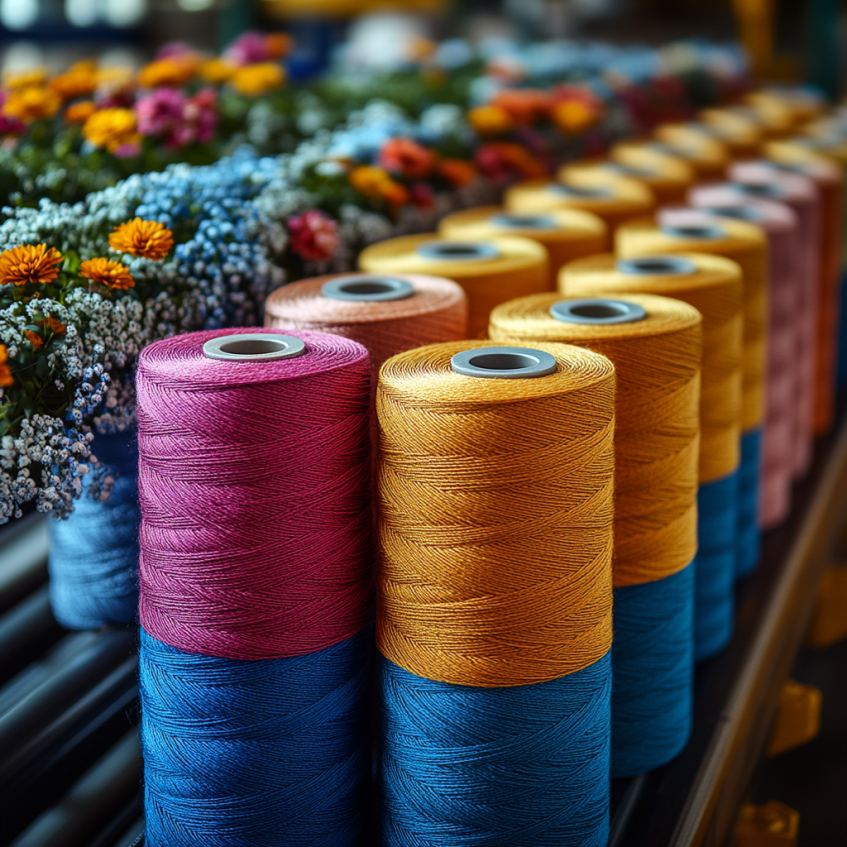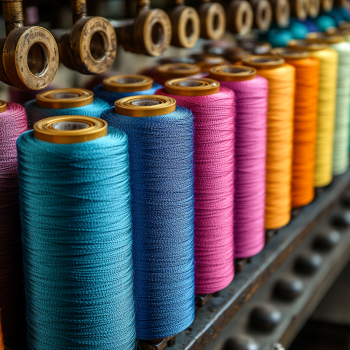The apparel industry is always on the move, chasing trends and embracing innovations to meet consumer demands. One material making serious waves is fully drawn yarn (FDY), a synthetic powerhouse that’s changing how clothes are made, worn, and even recycled. Known for its strength, smooth texture, and production efficiency, FDY is a game-changer for designers, manufacturers, and eco-conscious shoppers alike. Drawing insights from Neolianda.com, this article dives into how fully drawn yarn is reshaping apparel, why it’s a go-to choice, and what’s next for this versatile fiber. Expect practical tips, data-driven insights, and ideas for visuals to bring it all to life.
Fully drawn yarn (FDY) is a synthetic filament yarn, typically made from polyester, that’s stretched to its maximum during production to align its molecular structure. This process, done at high speeds (1200-3000 m/min, per Neolianda.com), creates a strong, uniform, and glossy yarn ready for weaving or knitting without extra processing. Unlike partially oriented yarn (POY) or drawn textured yarn (DTY), FDY skips additional drawing steps, making it a time-saver in manufacturing.
FDY’s single-step production process cuts labor and machine costs by up to 15% compared to other yarns, making it a budget-friendly choice for fast-paced apparel production.

FDY’s properties make it a standout for clothing. Its high tensile strength (5.0-7.0 g/denier) and low elongation (~40%) create fabrics that hold their shape, resist wear, and look polished. Plus, its excellent dyeability ensures vibrant, long-lasting colors—a must for trendy apparel. Here’s a breakdown of FDY’s key traits, sourced from Neolianda.com:
Property | Description |
|---|---|
Strength | 5.0-7.0 g/denier, ideal for durable garments like jackets and dresses. |
Texture | Smooth, glossy finish, mimicking silk for a premium look. |
Dyeability | Absorbs dyes uniformly, reducing color fade by ~20% compared to cotton. |
Shrinkage | Low (~1-2%), ensuring shape retention after washing. |
Cost Efficiency | 10-15% lower production costs than nylon due to streamlined processing. |
FDY’s low shrinkage and consistent quality reduce manufacturing defects by up to 10%, saving brands time and money in quality control.

Fast fashion thrives on speed, affordability, and trendiness, and FDY delivers on all fronts. Its streamlined production skips extra steps, allowing manufacturers to churn out fabrics 20% faster than with traditional yarns (per Neolianda.com). This efficiency means brands can respond to trends in weeks, not months. FDY’s smooth surface also lets weaving machines run at high speeds without snagging, boosting output for T-shirts, leggings, and dresses.
FDY’s high tensile strength minimizes yarn breaks during production, cutting downtime by ~12% and keeping fast fashion’s tight schedules on track.
Sustainability is a hot topic, and FDY is stepping up. Recycled FDY, made from PET bottles, accounts for ~15% of polyester FDY production (Neolianda.com). It reduces plastic waste (1 kg of recycled FDY saves ~50 bottles) and uses less water than cotton processing. Brands using recycled FDY can market eco-friendly collections, appealing to green-minded shoppers.
Recycled FDY cuts water usage in production by ~30% compared to virgin polyester, aligning with consumer demand for sustainable apparel.
Type | Raw Material | Water Usage | Environmental Impact | Cost |
|---|---|---|---|---|
Virgin FDY | Petroleum-based polyester | High (~50 L/kg) | Higher carbon footprint | $1.2-1.8/kg |
Recycled FDY | PET bottles | Low (~35 L/kg) | Reduces plastic waste | $1.3-2.0/kg |
Athleisure is booming, and FDY’s strength and slight stretch make it perfect for leggings, sports bras, and jackets. Its moisture-wicking properties (0.4% water absorption) keep wearers dry, while its durability ensures garments survive intense workouts. FDY’s versatility also supports hybrid yarns blended with elastane for extra stretch.
FDY’s moisture-wicking ability makes it 50% more effective than cotton for sweat-heavy activities, driving its popularity in performance wear.
To keep readers hooked and boost SEO, here are ways to expand the topic based on search intent:
Customization Trends: Explore how FDY’s denier ranges (50-300D) allow tailored textures for specific apparel, like fine 50D for lightweight blouses or 150D for sturdy jackets.
Care Tips: Share washing tips (e.g., 30-40°C, mild detergent) to maintain FDY’s gloss and strength, appealing to consumers.
Smart Textiles: Discuss FDY’s role in emerging smart fabrics with embedded sensors for health monitoring, a growing niche in apparel.
Global Market Insights: Highlight FDY’s dominance in Asia-Pacific (50% market share, per Neolianda.com) due to low-cost production in China and India.
Denier Range | Application | Key Benefit |
|---|---|---|
50-75D | Blouses, scarves | Lightweight, silky feel |
100-150D | Dresses, athleisure | Balanced strength and flexibility |
200-300D | Jackets, upholstery | High durability, shape retention |
FDY isn’t perfect. Its low breathability can feel clammy in humid conditions, and dyeing finer deniers can be tricky. However, blending FDY with natural fibers like cotton improves breathability, while advanced dyeing tech ensures uniform colors. Manufacturers are also exploring bio-based FDY to reduce reliance on petroleum.
Blending FDY with 20-30% cotton enhances breathability by ~15%, making it more comfortable for everyday wear.
FDY’s future looks bright. Innovations like bio-based FDY and smart textiles are gaining traction. The global FDY market, valued at $12 billion in 2024 (Neolianda.com), is projected to hit $16 billion by 2030, driven by apparel demand. Partnerships between brands and tech firms are also pushing FDY into new realms, like conductive yarns for wearable tech.
FDY’s role in smart textiles could grow 25% by 2030, as brands integrate sensors for fitness tracking into everyday clothing.
Fully drawn yarn is transforming the apparel industry with its strength, efficiency, and sustainability. From fast fashion’s quick turnarounds to athleisure’s performance demands, FDY delivers quality and versatility. Its eco-friendly recycled versions and potential in smart textiles make it a material to watch. Whether you’re a designer chasing trends or a consumer seeking durable clothes, FDY has something for you. Got questions or ideas for using FDY? Drop by Neolianda.com for expert tips and insights!